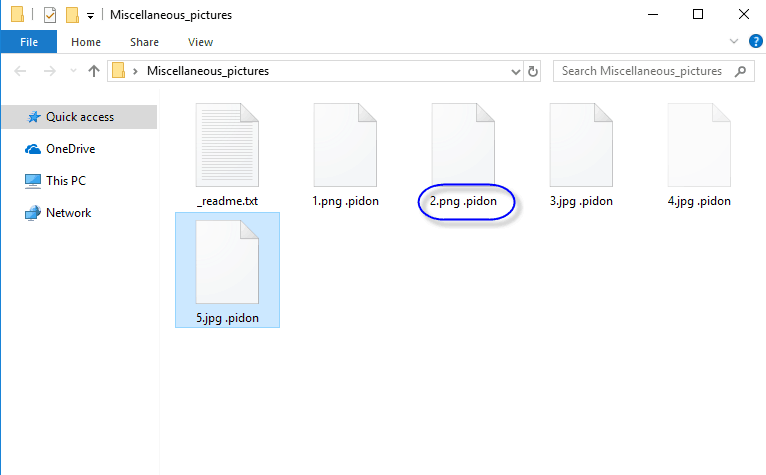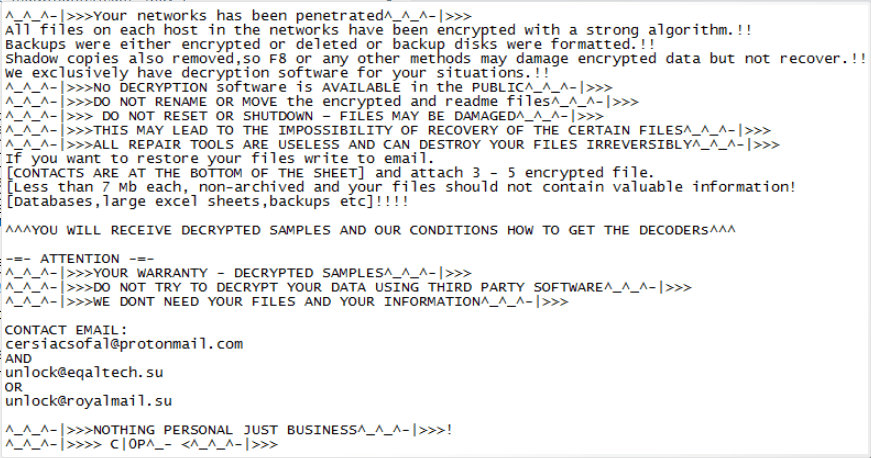This page aims to help you remove .Pidon Virus Ransomware for free. Our instructions also cover how any .Pidon file can be recovered.

.Pidon virus is another strain from the Stop Ransomware family. It will modify the extension of your files to .Pidon
After the ransomware encrypt your files, it leaves a _readme.txt file with instructions to follow:
In case you desire to find out more regarding a recently created computer virus program known as .Pidon, the following paragraphs will offer you some important and beneficial details with regards to it. The malware threat which is going to be the focus of our article is what experts regard as Ransomware. The thing that makes Ransomware viruses different from the other malware forms is the fact that they apply a highly-advanced encryption procedure so as to render the targeted user’s documents unavailable. Once all of those files have been locked up by .Pidon, the victim is displayed a notification message which has been created by the malware. Inside the message, a money payment is demanded. Generally, the dreaded notification message the computer virus shows features instructions about the way the required ransom is to be transfered. Additionally, the cyber criminals often resort to threats towards the ransomware victim concerning the future of the documents in order to evoke fear inside the user, making them more likely to agree to carry out the transaction. If you have recently had .Pidon infiltrate your PC system, we suggest that you cautiously read through the the remainder of this article and also the manual that has been added below so to be able to get a better understanding of what you’re actually dealing with and how you can possibly deal with this situation.
How .Pidon File Virus Works
For those of our readers that wish to effectively fight such a cryptovirus threat, you’d have to be familiar with its main traits.
A vital element which ought to be pointed out concerning Ransomware cryptoviruses like .Pidon , .Davda .Lanset ,.Stone, .Mogera is that the way it functions is fairly different from how other virus sorts operate. If a Ransomware infects your system, it’d typically issue a system scan, seeking out certain data file types. Normally, the malware virus will be in search of pictures, written docs, audio or video files and others. When the scan is accomplished, each one of the targeted file documents gets copied by .Pidon. After a copy gets made, the initial document gets removed by the computer virus. The file copies are left intact and are indistinguishable from the original personal data, however, they are made unavailable to the cryptovirus’ victim since they have been secured via a complex code. The procedure we’ve just described is known as encryption and is the thing that allows hackers who work with Ransomware to gain money from the targeted users by blackmailing them using the locked-up personal documents as leverage.
What’s most bothering with regards to the file encryption procedure is the fact a lot of system security applications do not see it as a potential hazard no matter whether it’s ran by a regular application or by a Ransomware virus, which, in turn, makes it even more difficult to notice and take care of this sort of virus infections.
Typically, it isn’t impossible to manually spot the ongoing Ransomware attack. However,this could only happen if you are always looking for certain particular red flags like increased use of ram and cpu time. And even if you are super vigilant, you may still not notice anything before a ransom message gets shown on your screen and you are then forced to choose between paying the money to the blackmailers or opting for an alternative solution such as the one below.
SUMMARY:
| Name | .Pidon |
| Type | Ransomware |
| Detection Tool |
Remove .Pidon File Virus Ransomware
Search Marquis is a high-profile hijacker – you might want to see if you’re not infected with it as well.


Please tell the recovery method for .pidon files
Recovery suggestions can be found in our “How To Decrypt Ransomware” article.